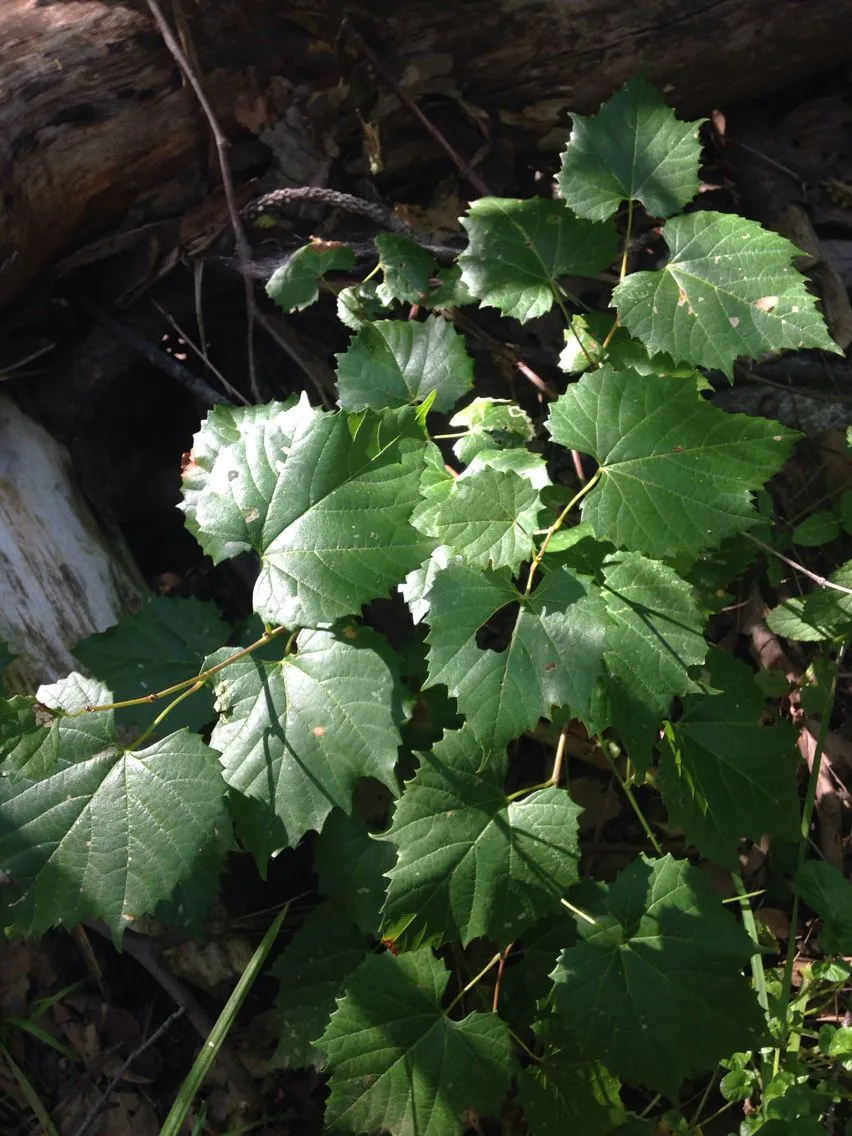
Author: Engelm.
Bibliography: Amer. Naturalist 2: 321 (1869)
Year: 1869
Status: accepted
Rank: species
Genus: Vitis
Vegetable: False
Observations: Nevada to Texas and N. Mexico
The Canyon grape, scientifically known as Vitis arizonica, is a remarkable species of the Vitaceae family. First described in 1869 by the renowned botanist Engelm. in the American Naturalist journal, this resilient grapevine has flourished across diverse landscapes from Nevada to Texas, and extending into Northern Mexico.
Canyon grape thrives under the intense sun and arid conditions characteristic of its native regions. This hardy vine is well-adapted to the rugged terrain and harsh climates, making it a standout representative of the Vitis genus. The plant showcases classic grapevine features, including tendrils that enable it to climb and spread across surrounding vegetation and structures. Its leaves are typically characterized by a lobed, heart-shaped appearance, contributing both aesthetic and ecological value to its environment.
Not only does Vitis arizonica play a crucial role in its native ecosystems by providing food and habitat for various wildlife, but it also holds cultural significance. Historically, indigenous peoples and early settlers have utilized the Canyon grape for its edible fruit and potential medicinal properties. The grape clusters, although smaller and more tart than their cultivated counterparts, can be made into jams, jellies, and even wines, offering a taste that reflects the untamed beauty of its origin.
Ecologically, Vitis arizonica is invaluable. Its presence along stream banks and rocky terrains helps in soil stabilization and erosion control, promoting biodiversity and sustaining the ecological health of its habitat. The vine’s adaptability to both desert and montane environments underscores its resilience and ecological importance.
In sum, the Canyon grape or Vitis arizonica is more than just a wild grapevine; it is a testament to nature’s resilience and adaptability. Through its widespread distribution from Nevada to Texas and Northern Mexico, it embodies the rugged beauty and ecological complexity of the regions it inhabits, supporting both natural ecosystems and human uses through its versatile nature.
Eng: canyon grape
En: Canyon grape
Ar: كرمة أريزونية
Taken Aug 11, 2020 by Christophe Christophe (cc-by-sa)
Taken Sep 26, 2020 by Shravan Kumbhare (cc-by-sa)
Taken Jun 1, 2020 by Roxanne Cariadi-Kimbler (cc-by-sa)
Taken Sep 26, 2020 by Shravan Kumbhare (cc-by-sa)
Taken Jan 1, 1900 by EOL − Stefani Ickert-Bond (cc-by-nc-sa)
Taken Jan 1, 1900 by EOL − Stefani Ickert-Bond (cc-by-nc-sa)
Taken Dec 20, 2014 by EOL − Allison Brody (cc-by-nc)
Taken Apr 18, 2015 by EOL − hummer56 (cc-by-nc)
Taken Nov 23, 2002 by EOL − Gary A. Monroe (cc-by-nc)
Taken Aug 13, 2014 by EOL − Damon Tighe (cc-by-nc)
Taken Sep 19, 2014 by EOL − Kenneth Bader (cc-by-nc)
Taken Mar 27, 2016 by EOL − lonnyholmes (cc-by-nc)
Taken Aug 25, 2022 by Anant pochampalliwar (cc-by-sa)
Taken Sep 26, 2014 by EOL − lonnyholmes (cc-by-nc)
Growth habit>: Vine
Family: Myrtaceae Author: (F.Muell.) K.D.Hill & L.A.S.Johnson Bibliography: Telopea 6: 402 (1995) Year: 1995 Status:…
Family: Rubiaceae Author: Pierre ex A.Froehner Bibliography: Notizbl. Bot. Gart. Berlin-Dahlem 1: 237 (1897) Year:…
Family: Sapindaceae Author: Koidz. Bibliography: J. Coll. Sci. Imp. Univ. Tokyo 32(1): 38 (1911) Year:…
Family: Asteraceae Author: A.Gray Bibliography: Pacif. Railr. Rep.: 107 (1857) Year: 1857 Status: accepted Rank:…
Family: Fabaceae Author: Medik. Bibliography: Vorles. Churpfälz. Phys.-Ökon. Ges. 2: 398 (1787) Year: 1787 Status:…
Family: Aspleniaceae Author: (Cav.) Alston Bibliography: Bull. Misc. Inform. Kew 1932: 309 (1932) Year: 1932…